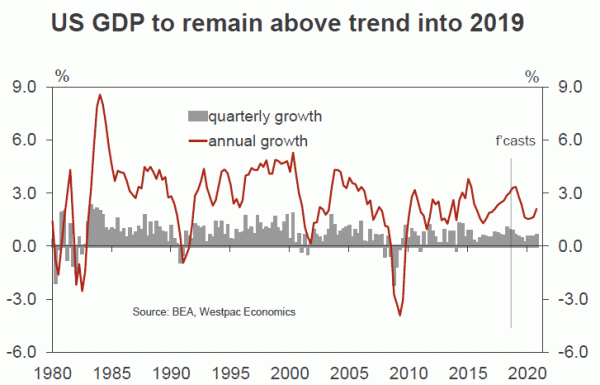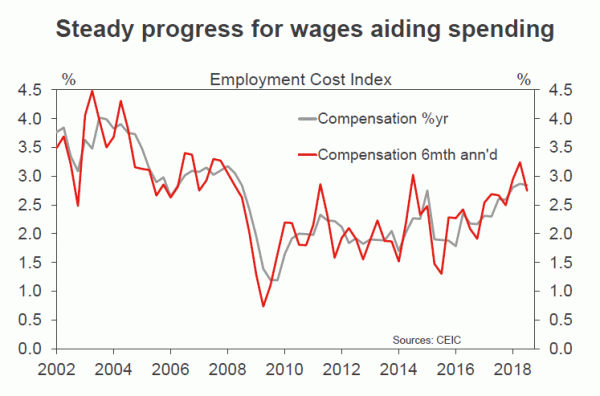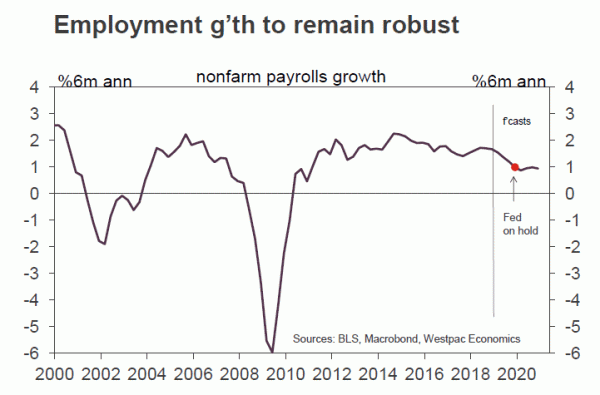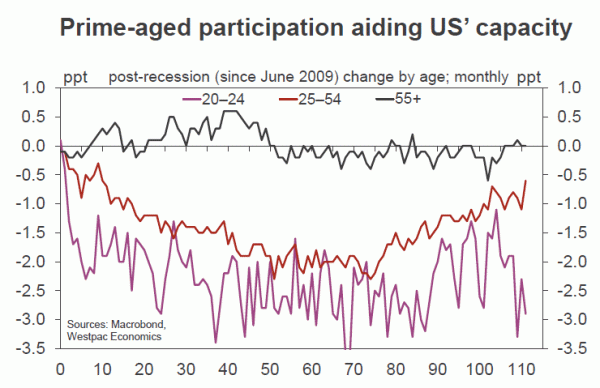A December hike should be expected; we see a further three hikes thereafter, to September 2019.
The past week has seen the FOMC highlight the Committee’s central view for the economy as well as the key risks they see via a number of high-profile speeches and the November minutes.
Beginning with their central view on the economy, Vice Chair Clarida made clear that US economic momentum remains “robust, as indicated by strong growth in gross domestic product (GDP) and a job market that has been surprising on the upside for nearly two years”. Chair Powell further added that the FOMC is now close to fulfilling its objective of “maximum employment”, highlighting the structural strength of their economy.
On the Committee’s other objective of “price stability”, which in practice means PCE inflation of around 2.0%yr, there was however little evidence that these central figures of the FOMC perceive a threat. Rather, Vice Chair Clarida highlighted that, based on consumer and market inflation expectations, the risks for inflation versus target remain skewed to the downside. Here the recent sharp decline in the price of oil is a factor, but so are two structural themes: rising prime-aged participation and a long-awaited lift in productivity – aiding aggregate supply.
As per the November minutes, it is then not surprising that the preference of the vast majority of the Committee remains repeatedly tightening policy over the coming year, albeit in a gradual, data-dependent manner. This caveat recognises policy has a lagged effect on the economy, as highlighted by Chair Powell in his speech, and that neutral is an uncertain concept.
Both Chair Powell and Vice Chair Clarida characterised the current stance of policy as “just below” FOMC members estimates of neutral – a 100bps range, from 2.5% to 3.5%. Returning policy to a neutral setting could therefore mean one rate hike or five – depending on the durability of current momentum.
We continue to hold that the number of rate hikes from here is likely to be towards the top end of that range. We see four hikes from December 2018 to September 2019. This would result in a peak federal funds rate of 3.125%, a touch above the longer-run neutral rate projected by the FOMC, but below the 3.4% peak that their September forecasts signalled for 2021.
Justifying this view, while we believe business and residential investment will weaken further, the consumer is expected to remain robust, holding GDP and employment growth above trend till at least mid-2019. Given the significance of the consumer to US growth, the key risks for the outlook are around wealth and sentiment.
On this front, notable in Chair Powell’s address was the view that financial valuations for major asset classes do not excessively exceed historical benchmarks. He went on to emphasise that spending was not endangered by mere market volatility, but instead by “Large, sustained declines in equity prices” which, as yet, have not been seen. Further, to our mind, for main street America, the housing market is the key asset class, and here price growth is continuing at a multiple of income growth.
The other major risks to keep in mind are the ebbing of fiscal expansion and trade policy uncertainty. On fiscal policy, while it is true that the boost to discretionary incomes from 2018’s tax cuts is fading, the current extraordinary level of fiscal expenditure will persist till late-2019, supporting activity and sentiment.
Over the coming year then, trade policy is the greater risk. Not only does it seem that the tariffs introduced to date have curbed investment growth, but as per the November meeting minutes and recent communications by President Trump, there is further downside risk. This is true both with respect to the scale and effect of this policy. How it affects business investment and employment will remain the FOMC’s focus.

















